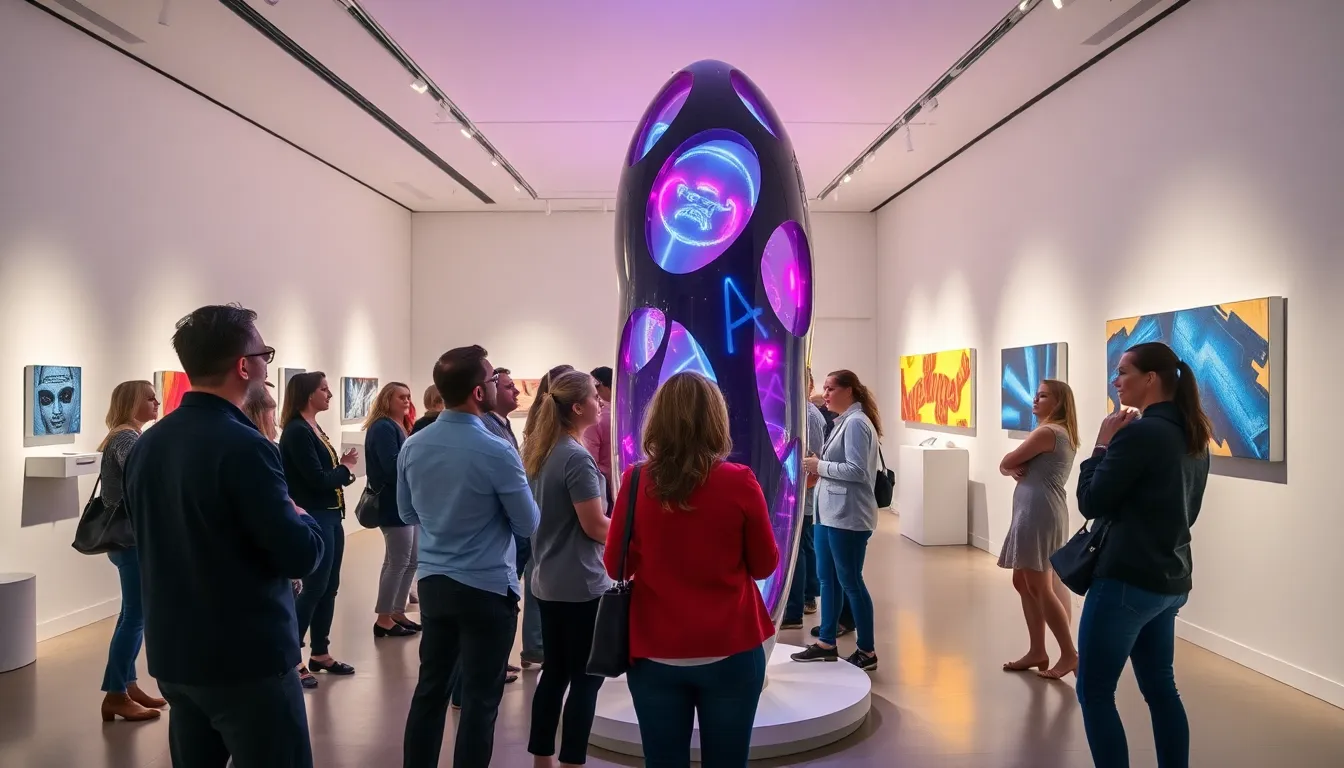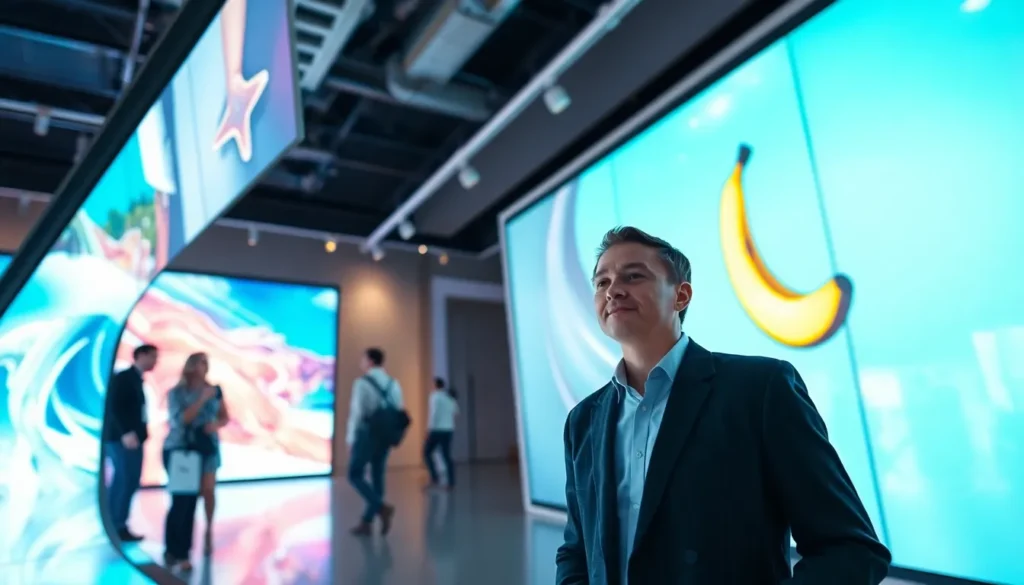Table of Contents
ToggleIn a world where technology revolutionizes every aspect of life, it ironically finds itself entwined with something as deeply human as art. Think about it: without technology, we wouldn’t have the ease of creating digital masterpieces, nor would we even be able to read this article about how they intersect. From mesmerizing installations that respond to our very movements to digital canvases that come alive with every swipe, technology art is where creativity meets innovation. So grab a virtual cup of coffee and let’s peel back the layers of this exciting fusion, because if there’s one thing this article guarantees, it’s an engaging exploration with a side of humor.
Understanding Technology Art

Technology art symbolizes a convergence of artistic expression and technological advancement. It encapsulates diverse forms including digital installations, interactive sculptures, and even virtual reality experiences that challenge traditional notions of creativity. This genre not only pushes the boundaries of what art can be but also redefines the ways we experience it. Art enriched by technology invites viewers to engage actively rather than passively observe. Such artworks can be found in galleries or online, showcasing the versatility and universal reach of this medium.
The Role of Technology in Art Creation
One cannot discuss technology art without emphasizing its tools. Artists now use coding, 3D printing, and software to breathe life into their visions. For example, a digital artist may use platforms like Adobe Creative Suite to manipulate images that might initially exist only in their minds. These tools empower them to explore new dimensions and experiment with textures that traditional mediums may not allow. Besides, technological advancements such as artificial intelligence are beginning to impact the creative process, offering new avenues for both seasoned and emerging artists.
Banana Purchase: A Metaphor in Technology Art
The term ‘banana purchase’ humorously encapsulates the absurdity that can emerge in the world of technology art. In 2019, an artist garnered international attention by selling a banana taped to a wall for $120,000. This stunt highlighted not just the intersection of absurdity and value but also how technology enables commodification of modern art. It stirred discussions on digital art’s worth versus traditional counterparts, illustrating how anything, even a banana, can become an art piece in today’s world. This raises pertinent questions about the role of technology: Does it devalue art, or does it democratize access and appreciation?
RedWebzine: A Hub for Digital Art Enthusiasts
RedWebzine stands out as a vibrant platform dedicated to showcasing digital art. This online hub connects artists and art lovers, offering a space for creative exchange and collaboration. With features that allow artists to upload their works and engage with a global audience, it serves to amplify voices that may otherwise go unheard. By breaking down barriers to publishing, RedWebzine democratizes the sharing of art, allowing everyone a chance to showcase their creativity while benefiting from community feedback.
Ebooks and Their Impact on Art Accessibility
Ebooks have transformed the way art education and appreciation are shared. By allowing artists to publish their work digitally, they’re able to reach a wider audience without the costs associated with traditional printing. Besides, art-eccentric ebooks can provide tutorials, background on movements, and insights into digital techniques, making them invaluable resources for aspiring artists and art lovers alike. This ensures that even those on tight budgets can access quality art instruction and engage with the digital art community.
The Future of Technology Art
Looking ahead, the future of technology art seems dazzlingly bright. As innovations continue to emerge, artists will have even more tools at their disposal that only expand creative possibilities. Imagine immersive experiences powered by virtual reality or artworks that adapt and change based on viewer interactions. These advances not only enhance artistic expression but also resonate deeply with broader societal trends toward personalization and interactivity. So, technology art will likely evolve to embrace a wider range of voices, making it an ever-more inclusive art form.





